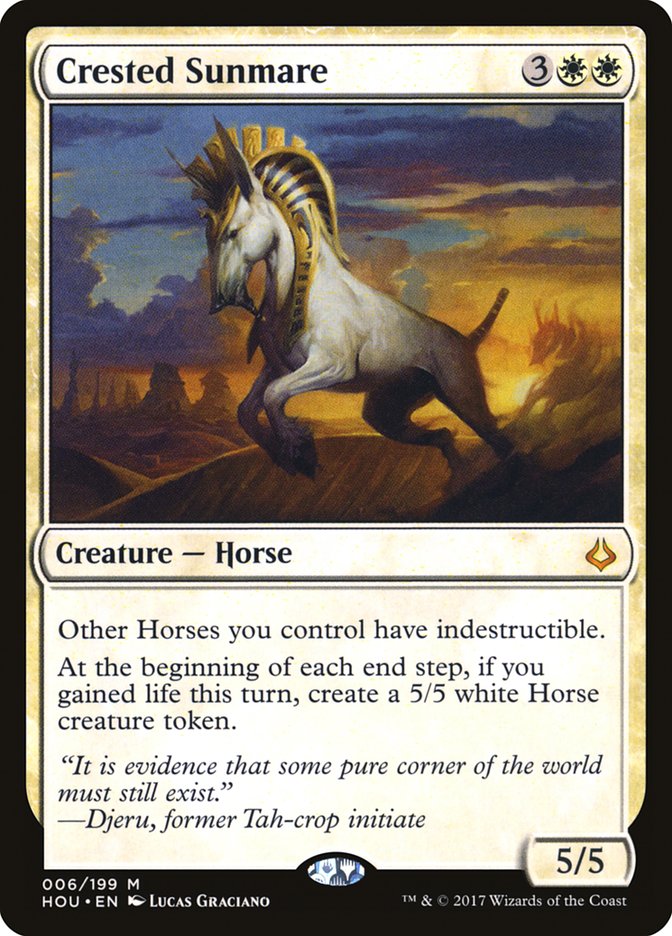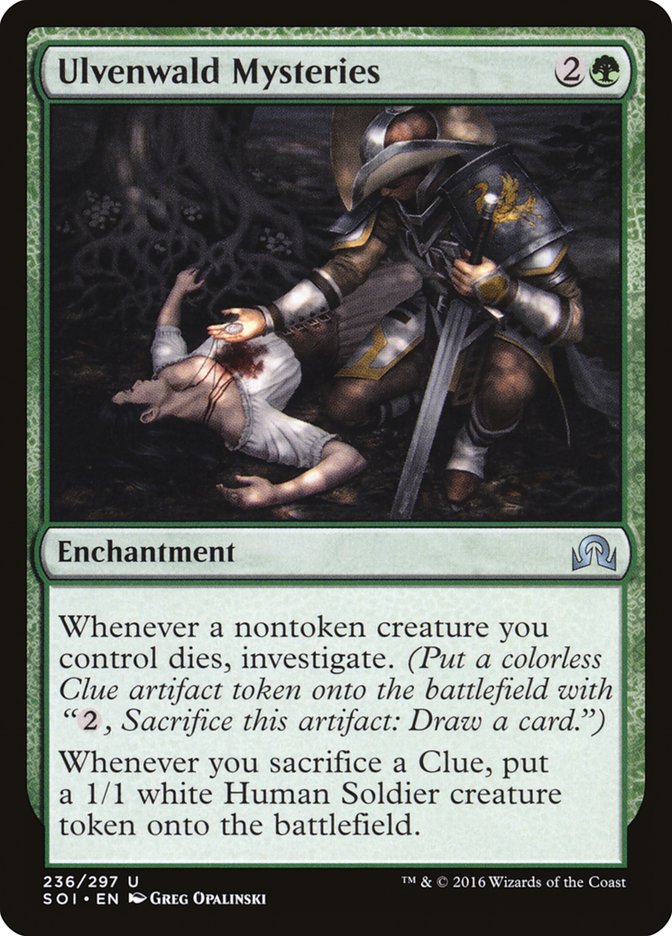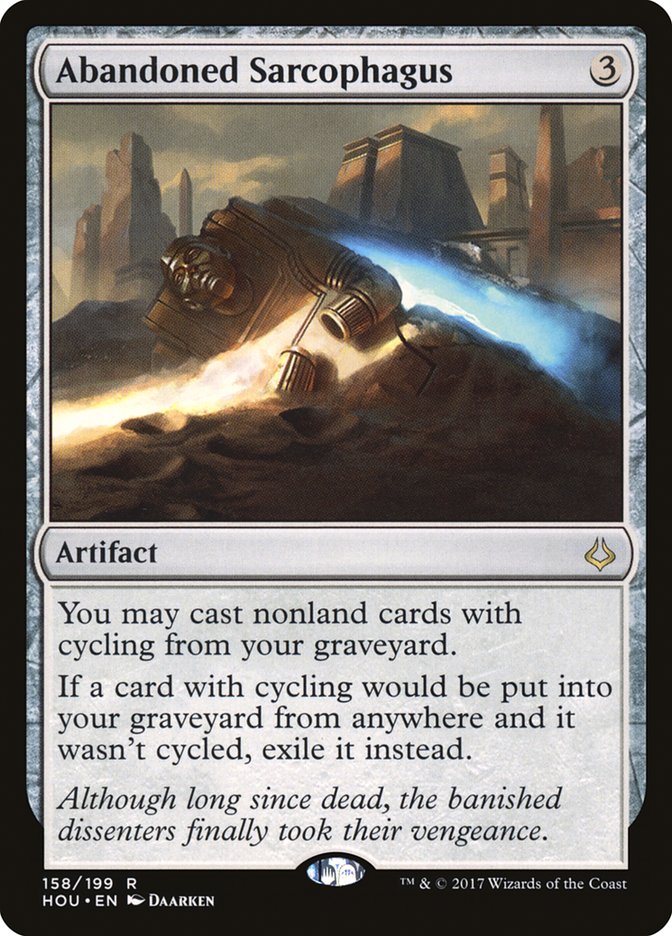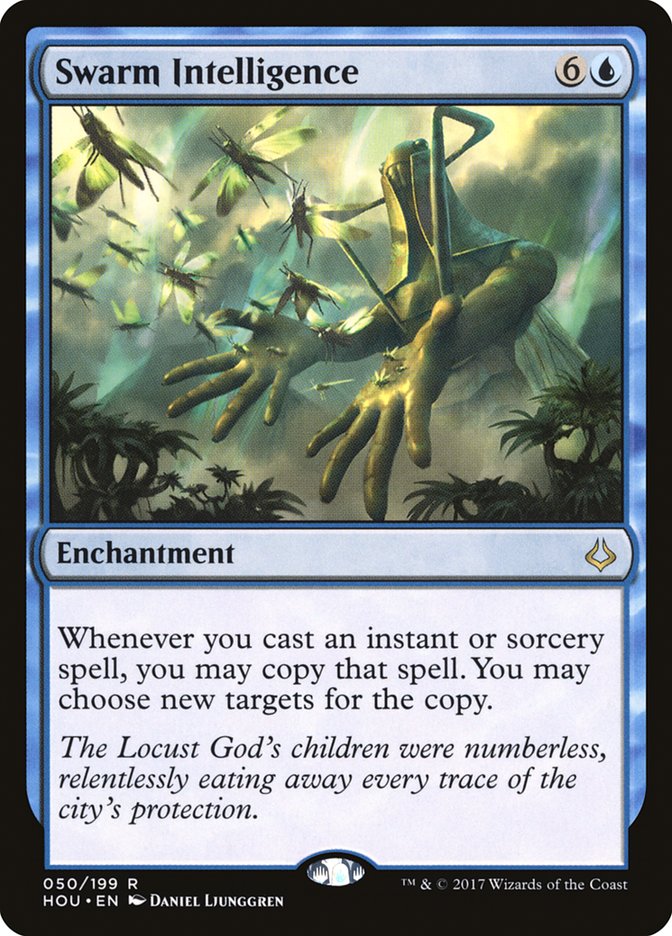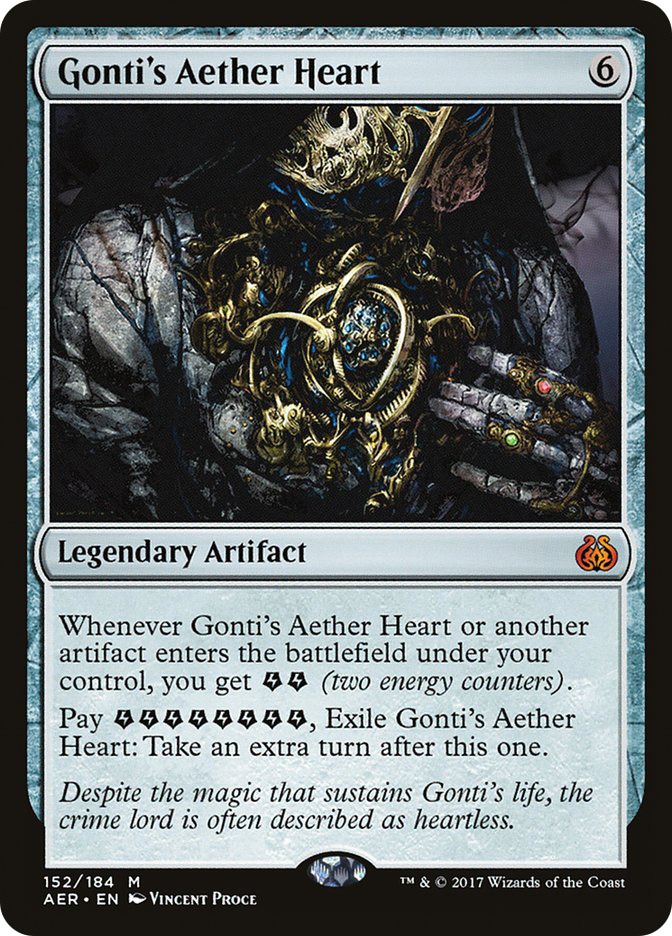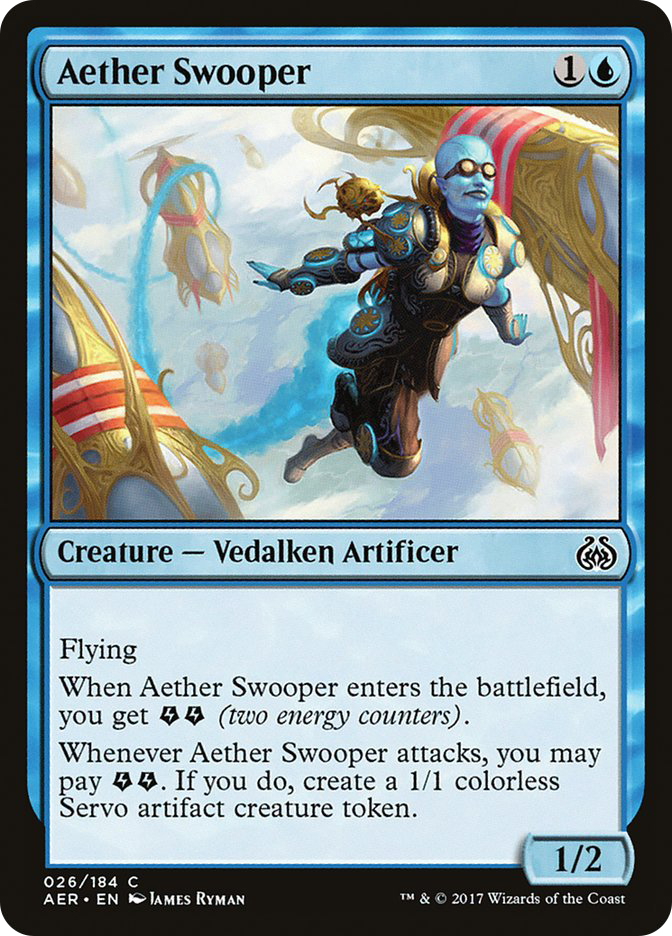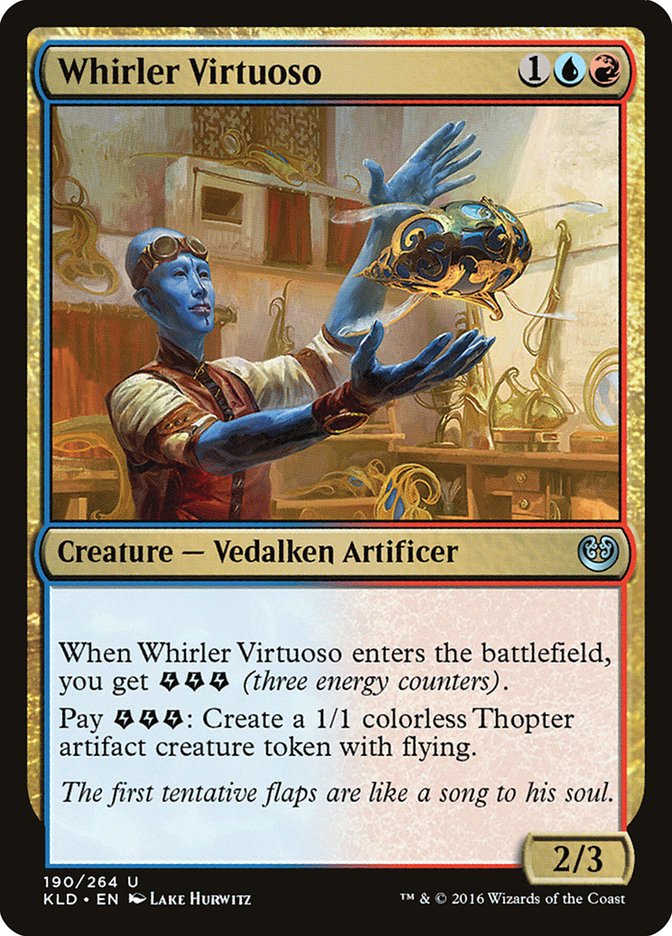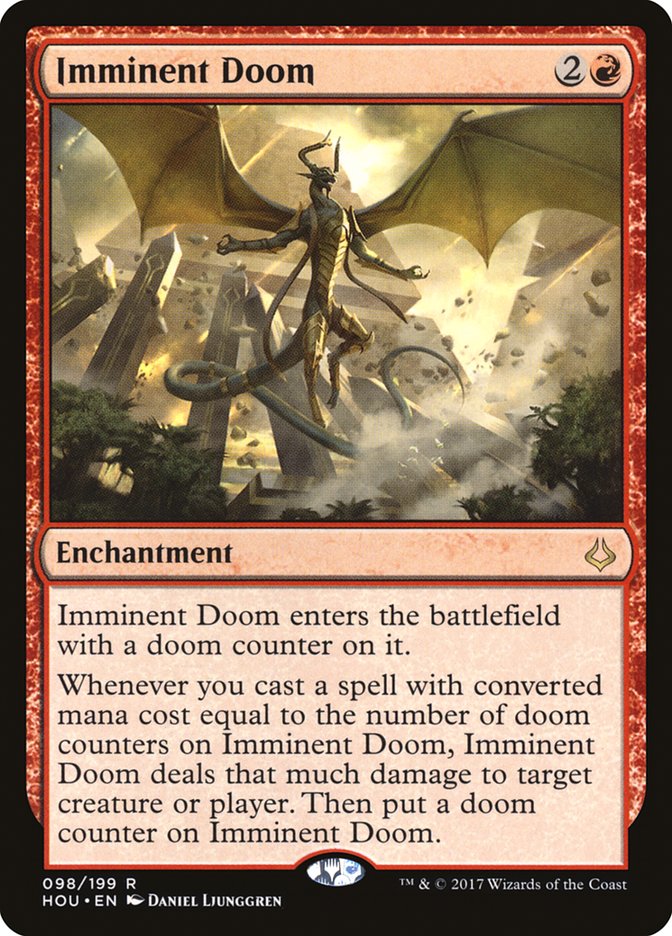Nowadays every Limited format has build-around cards. They’re often at rare, with one or two at uncommon. If you stumble across one at uncommon, those are likely supported within the format, while the higher rarity build-around cards often require a little more creative thinking and finesse.
But these cards come in all different shapes and sizes. I don’t mean colors and converted mana costs; I mean the effort required to make them worth it. We refer to them as “build-around cards” because you can’t just throw them in any deck. They take work to sculpt the proper shell. Sometimes it takes a lot of work, and sometimes it only takes a little. But the payoff truly varies. It’s important to be able to identify this and simultaneously shift your card evaluation to optimize for the card (if it’s worth it, that is).
The Good
The best build-around cards have a well-aligned function between the amount of effort you have to put in and the amount of payoff that you get. These cards often have a high floor and, as they’re build-arounds, quite the high ceiling.
A 5/5 for five is a solid rate in Limited. I would play this card in plenty of my white decks. Add one or two cards with incidental lifegain like Aven of Enduring Hope or Sunscourge Champion and the card becomes great. And when you get a card like Resolute Survivors or even God-Pharaoh’s Faithful (if your deck is controlling enough) as a repeatable source of lifegain, Crested Sunmare becomes broken.
The point of this card is that it’s good enough to justify playing without too much work. And when you put in the work, it becomes unbelievably good. That’s the best of both worlds when it comes to build-around cards. Always look at the floor and then the average case. The ceiling is cool and all, but that shouldn’t be where you evaluate the card to start.
In the beginning of its format, Ulvenwald Mysteries was not picked that highly. By the end it was a card that didn’t get passed much. The reason was that it looked like a build-around card, but in truth it wasn’t. I’m including it here simply to illustrate the point where you should look towards effort over payoff when it comes to evaluating how good a build-around card is. The less effort you have to put in for it to be good, the better the card has a shot at making your deck.
With Ulvenwald Mysteries, many players looked at what they were getting. A Clue is good, but nothing to write home about, and random 1/1 creatures aren’t really worth a card. But the key to the power of this card is that it makes trading impossible for your opponent. Every Limited deck is filled with creatures, and trades happen frequently. You didn’t have to put in any work to build around this card, which is why it turned out so good.
These build-around cards take quite a large amount of work, but are also spectacular! This reason is two-fold. First, the advantage gained from these cards is astronomical. Abandoned Sarcophagus is completely unmatched card advantage, and Spider Spawning is unmatched battlefield presence. And the second is that these cards are built around mechanics with built-in velocity.
The reason build-around cards that take so much work don’t often work out well is because if you don’t draw them, the rest of your deck can be filled with inefficient cards. But milling yourself and cycling both rip through your deck to the point where you can draw your namesake card with high enough consistency to make it worth it. It’s still important for the rest of your cards to function without your build-around card, but with built-in velocity, you can get away with a little more.
These kinds of cards are fun, but I’m hesitant to take them early because they still don’t always work out. Unlike Crested Sunmare and Ulvenwald Mysteries, the floor for Abandoned Sarcophagus and Spider Spawning is below the basement. They could do absolutely nothing. But they are powerful enough to justify first-picking, and seeing them late is when you really should capitalize on them because that is a signal that nobody else is trying to employ that specific strategy, and you can therefore wheel cards that will be important for your deck.
The Bad
Almost every card in this category can be pinned by the amount of effort required to make the card good. Let’s first look at some cards from the last couple of sets:
Don’t get me wrong; these cards aren’t unplayable. Under very specific circumstances, they can be good. But often the cards aren’t insane even in those cases, instead merely a good part of your strategy. Why is that, though? How can you tell that a build-around card won’t be worth it?
Well, not so coincidentally, it’s the flip side of a good build-around. All of these cards take an excessive amount of work to become good. I’ve played all of these cards in decks to good effect, but once or twice per format, which should speak to how bad they are normally.
It’s pretty easy to tell what makes the cards good; they often have it written straight on it. Swarm Intelligence wants spells, Sacred Excavation wants cyclers, and Gonti’s Aether Heart wants energy. It’s not hard to have enough targets for Sacred Excavation, but so many of the cyclers are low-impact that, even when you build around it, the card just isn’t good enough.
The key to maximizing bad build-around cards is finding the powerful cards that go well with them. Drawing extra cards off Crash Through won’t make Swarm Intelligence good enough, but every removal spell doubling up can buy back the tempo loss. Making one Servo a turn with Aether Swooper and Gonti’s Aether Heart is cute, but doesn’t justify the clunky artifact. Machine-gunning out Thopters with Whirler Virtuoso is what gets things moving.
If you can get enough of these powerful combos to go with bad build-around cards, then you can put them in your deck. But it’s important to note that the other side of the combo should be a card that stands well on its own.
The Crazy
This is where things get wonky, and it’s almost strictly at higher rarities. These are often cards that look like they should belong in “the bad” category, but somehow an archetype aligns as a perfect home for this crazy strategy and you can capitalize on it without much sacrifice.
Everybody thought Imminent Doom was going to be terrible. There aren’t very many spells that are both one mana and good in Limited. And even more so, these spells are often best early, not late. You don’t want to hold onto your Bloodlust Inciter to trigger Imminent Doom, so the amount of effort to make this card good looks through the roof.
It just so happens that in Hour of Devastation, the U/R archetype has a variety of one- and two-mana cards that scale well into the late-game. Some of them, namely the bounce effects such as Unsummon, happen to work even better with Imminent Doom. That’s just enough to make a crazy build-around card into a game-winner.


